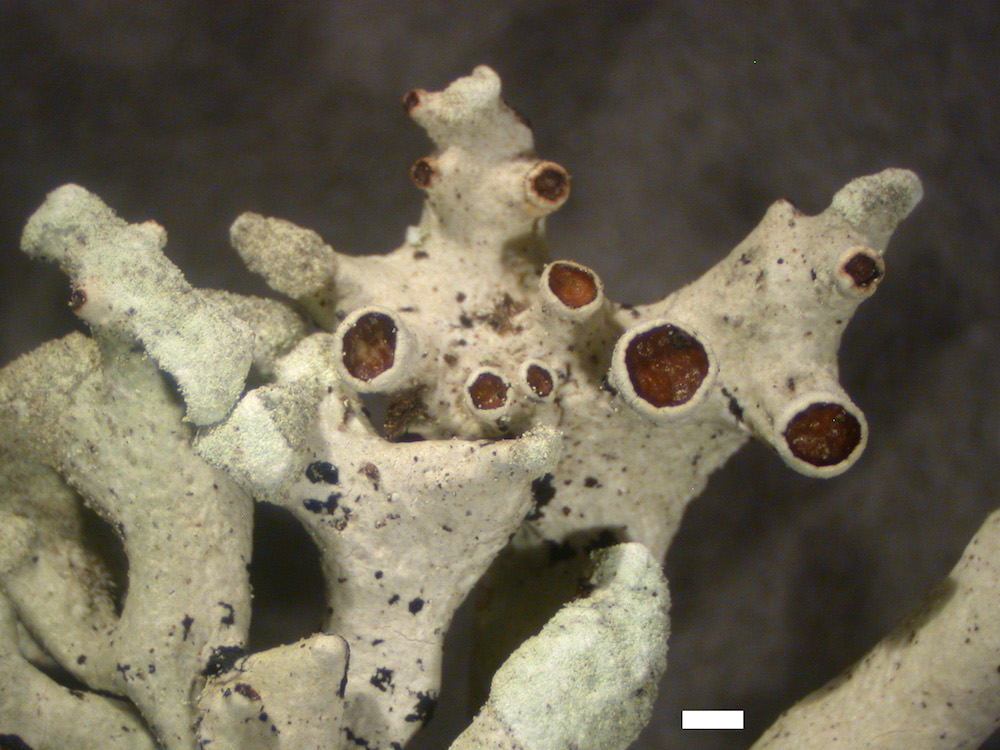Click on Characteristic name for explanation. Click on image for larger version.
Overview
| Synopsis:
| Suberect to erect lobes with powdery soredia coating the tips, lobes entire to sparsely perforate, with cavity white or dark; medulla K+ slow reddish brown, KC+ orange red, P-.
|
| Distribution:
| China: Neimongol (f. farinosa) Wei (1991); Turkey (John 1996); European part of Russia, all of Siberia, Kamchatka, N Am (Rass. 1971); Europe, N Am, E Africa, Himalaya (Purvis et al. 1992); Canary I (Tavares 1952); Ukraine (Kondratyuk et al. 1996); Madeira (Arvidsson and Wall 1985); Morocco (Egea 1996); South Africa (Hale spec. in US); temperate W Himalayas (Awasthi 1988); Kazakhstan (Wagner & Spribille 2005, unpublished list).
|
| Habitat:
| warm temperate to boreal and montane, wet to semia
|
| Range:
| Central and Southern California, Southern Rocky Mountains, Eastern North America, Arctic, Subarctic, Alpine, Pacific Northwest Immediate Coast, Northern Rocky Mountains, Pacific Northwest
|
| Other Diagnostics: | The species is easily distinguished by its suberect to erect lobes with soredia coating the tips. Hypogymnia bitteri has terminal soralia but an appressed, rosette-like thallus with contiguous lobes and often an overall brownish color.
| | Substrate Notes: | On conifers, hardwoods, both bark and wood, rarely on rock, detritus, or tundra sod
| | Abundance in North America: | Common
| | Substrate: | Typically
| | Host: | Conifers and deciduous trees, both bark and wood
| | On Rock: | Rarely
| | On Moss/Detritus/Sod: | Rarely
| | Authority: | (Schaer.) Hav.
| | References: | Westberg et al. (2011)
| | Synonymy: | None
|
|

Habit
|
Reproductive Structures
|
|
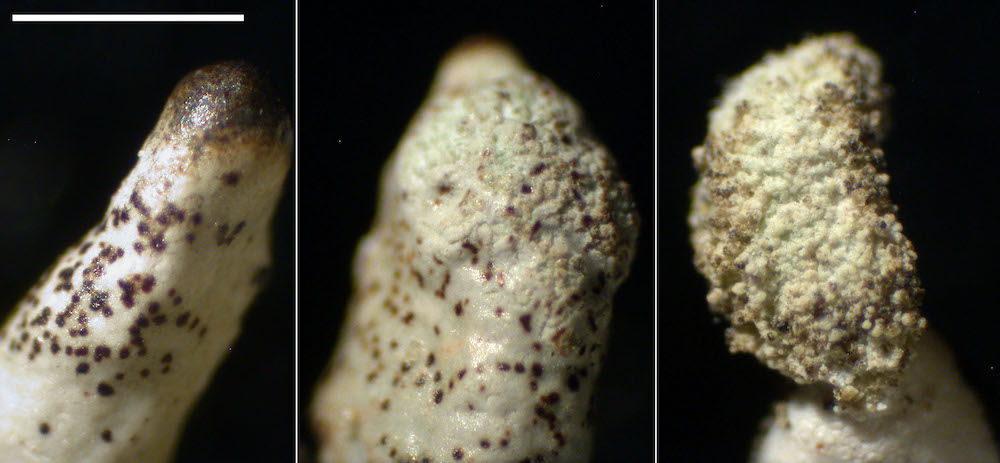
Soredia developmental sequence
4/5
|

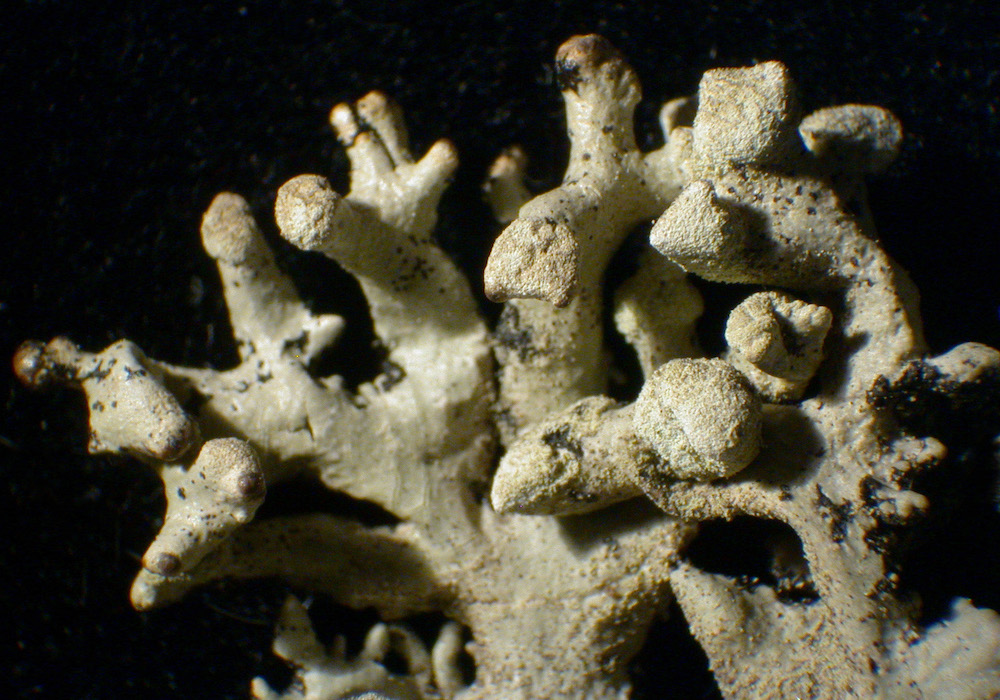

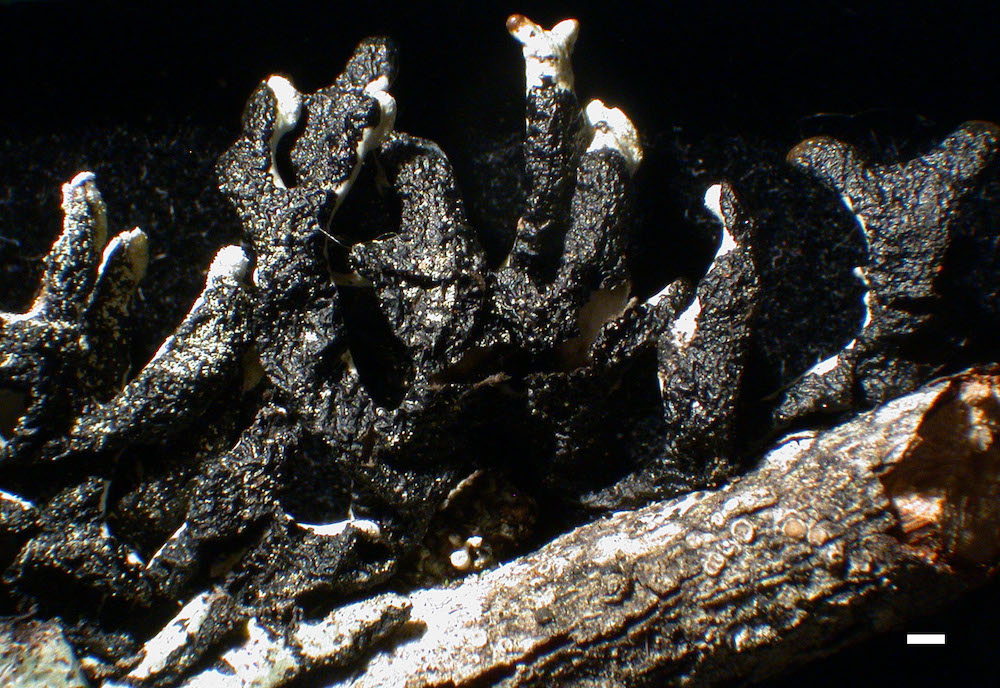
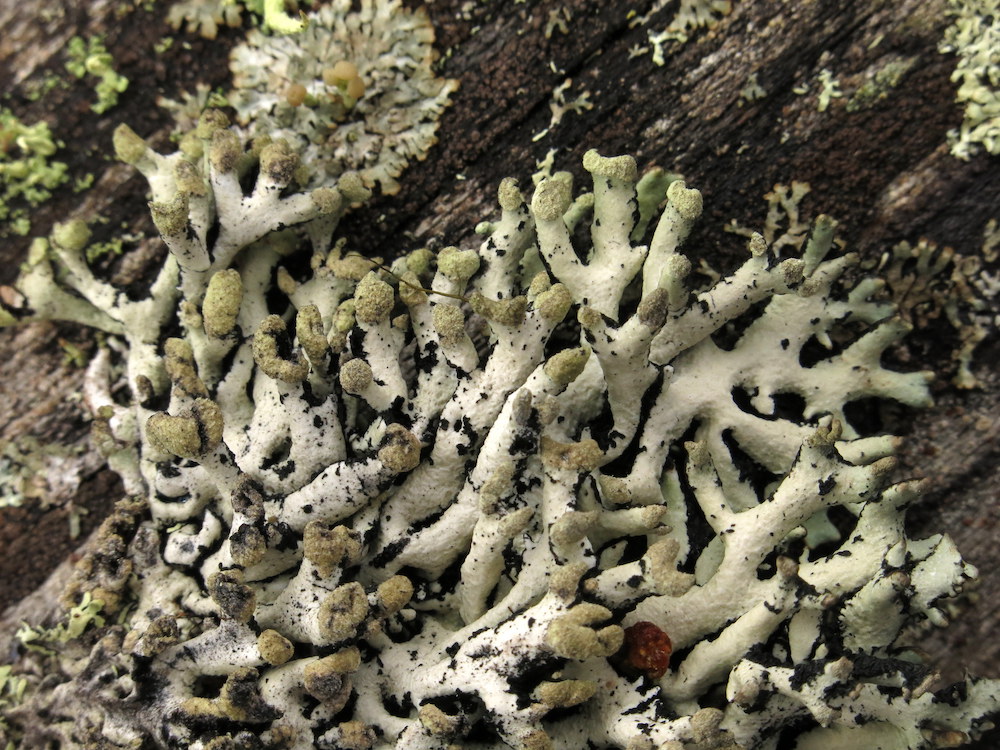
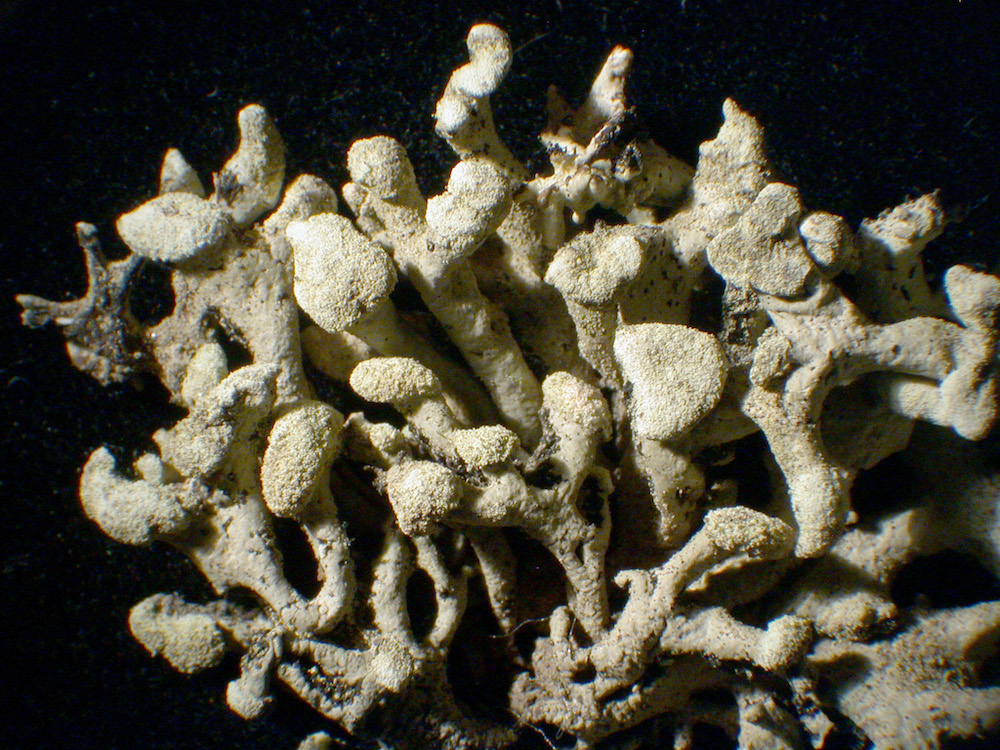
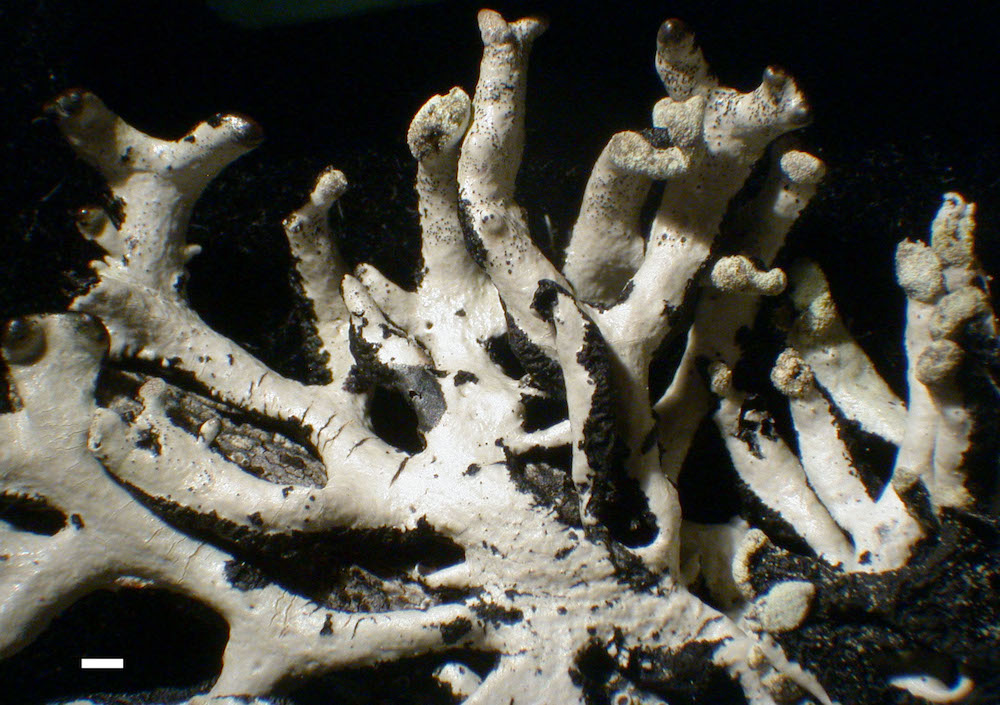
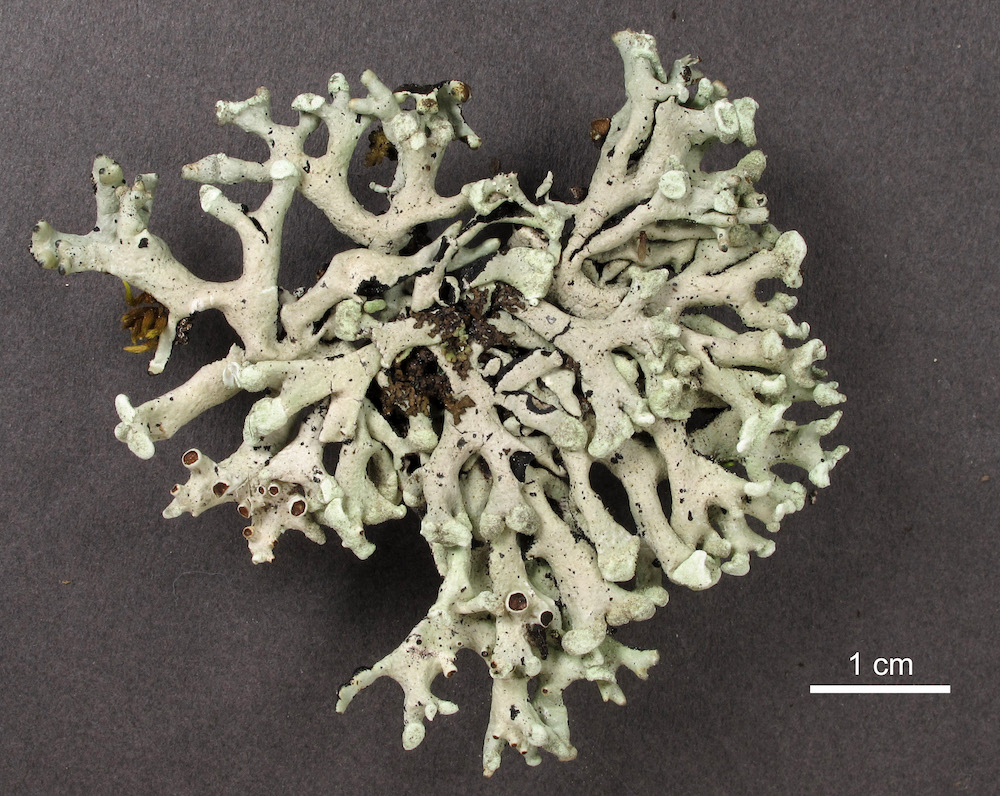
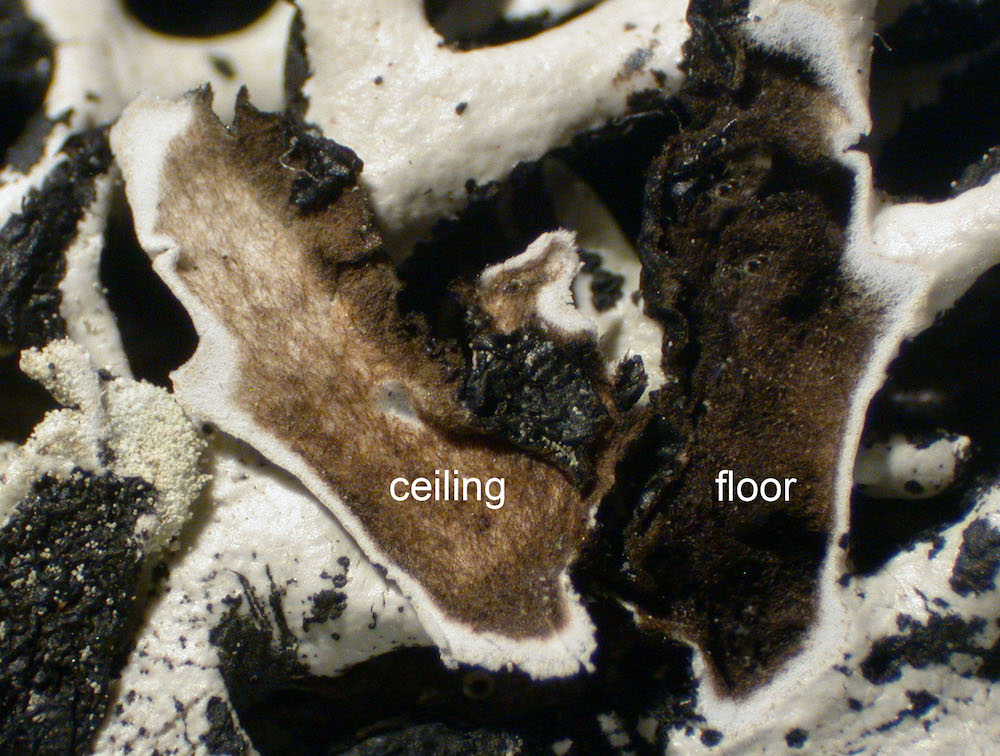
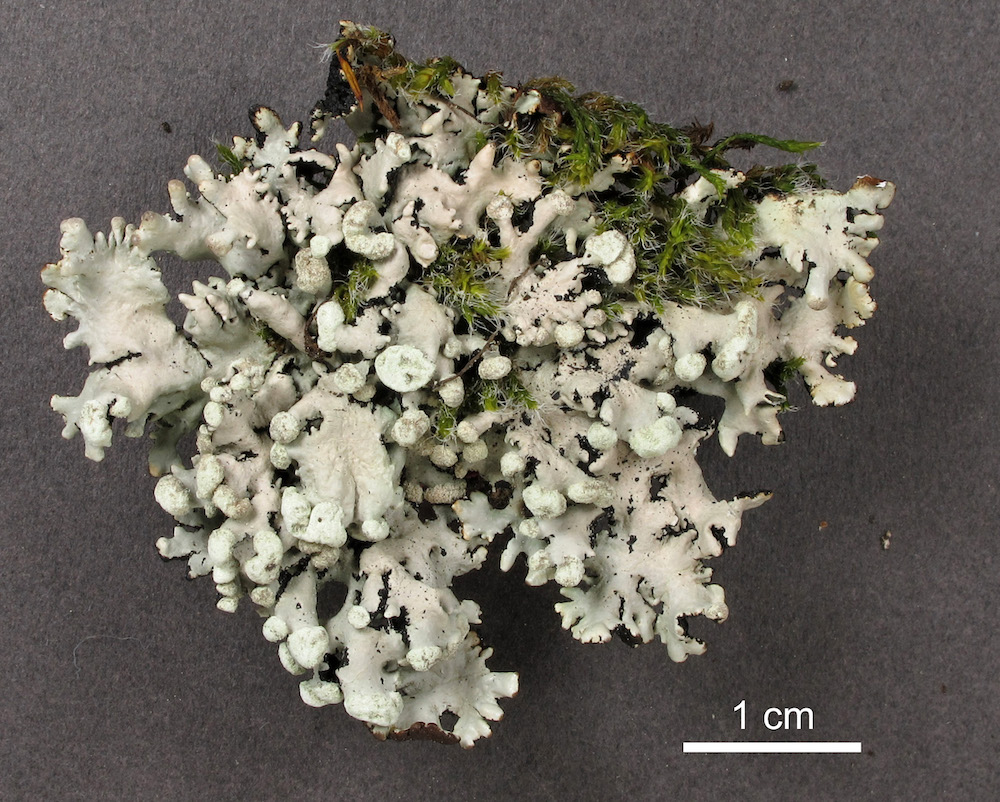
.JPG)




